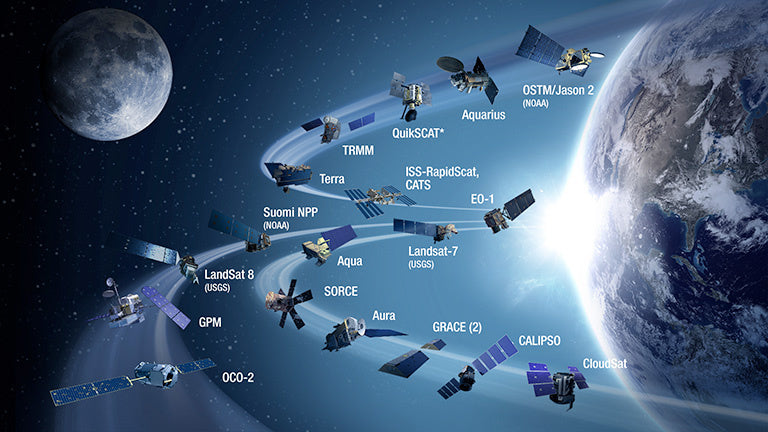
Low-Orbit Collisions and Broadband Bickering: Satellite Constellation Politics Have Truly Begun
Share
NASA is a tad concerned about certain commercial characters making low-orbit progress.
To be accurate, NASA has "substantial concerns" when it comes to the new-age of satellite constellations. Specifically those of Texas-based company AST & Science.
AST & Science plan on operating a constellation of up to 243 satellites 720km above Earth on a path that NASA believes will threaten its "A-Train" of Earth-observing satellites. The A-Train's remaining four active satellites help scientists understand our planet's changing climate.

AST & Science's 243 satellite constellation called SpaceMobile will have above average antennae on each of its spacecraft to provide broadband internet to mobiles over an area of about 900 square metres.
The SpaceMobile satellite configuration will have massive cross-sections that intersect with NASA's A-Train - 10 Earth satellite observation missions by NASA, the U.S. Geological Survey and international partners. The A-Train's average altitude is 705km but can drop as low as 690km and upper drift to 740km.
Because of this, NASA representative to the Commercial Space Transportation Interagency Group, Sarah Fonder penned "... therefore, the AST constellation would be essentially collocated with the A-Train if the proposed orbit altitude is chosen," in a NASA letter to the U.S. Federal Communications Commission (FCC).
Satellite constellations shouldn't be confused with:
- satellite clusters - groups of satellites moving very close together in almost identical orbits
- satellite programs - generations of satellites launched in succession
- satellite fleets -groups of satellites from the same manufacturer or operator that function independently from each other (not as a system).
By their calculations, NASA's letter predicts around 1,500 "mitigation actions" (maneuvers to avoid collision) on top of 15,000 "planning activities" (traffic control for the skies). That's the equivalent of four maneuvers and forty planning activities every single day.

The letter continues, "this is an orbit regime that has a large debris object density (resulting from the Fengyun 1-C ASAT test and the Iridium 33-COSMOS 2251 collision) and therefore experiences frequent conjunctions with debris objects,"
Translation: the debris from a 2007 Chinese anti-satellite test and a 2009 collision between a then working satellite and a dead one is also on this orbital path.
Furthermore, the NASA letter strongly recommends AST & Science, "consider alternative orbit regimes for this constellation, perhaps notably below the A-Train constellation, in order to allow for a more manageable safety-of-flight situation for a constellation of such large satellites,"

While NASA kicks up a stink, AST & Science maintains SpaceMobile won't create any collision potential. Their calculations attest the risk is more like a 1-in-5,000 chance of random collision, without any mitigation action.
However, when we use this probability against 243 satellites, the chance of collision is about 1 in 20. Although AST & Science founder Abel Avellan stresses the company knows what they're doing, they are yet to launch a single satellite into orbit, ever.
But why are so many satellites needed?
Think of your GPS in your phone or device. It needs 24 satellites to be equally distributed on six orbital planes to function. Location depending, let's say you're in the US and access your GPS. The below demonstrates which satellites are "visible" to your phone (red) and location and which aren't (black).

A system like SpaceX's "Starlink" is another beast altogether. Constant internet connection everywhere on Earth requires thousands of satellites and a large piece of the sky pie. That, and a crack team of world class technicians to fly Starlink considerably lower than the A-train, at 550 km above the planet's surface.
But SpaceMobile's daddy won't go down without a fight. "We're not a bunch of cowboys launching satellites, this is a serious, well-funded project." said Avellan. He's not wrong. His financial backers include Samsung, Rakuten and Vodafone who recently contributed about US$128 million.
With SpaceMobile, Starlink, and Jeff Bezos's 3,200 projected Amazon broadband satellites expected to hit the skies, we've only scratched the surface of low-orbit traffic politics.
With players big an small involved, we may quintuple the current amount of satellites, putting the total number in the any tens-of-thousands. Higher estimates say 100,000 satellites in our night sky within the decade.
#Space_Aus




